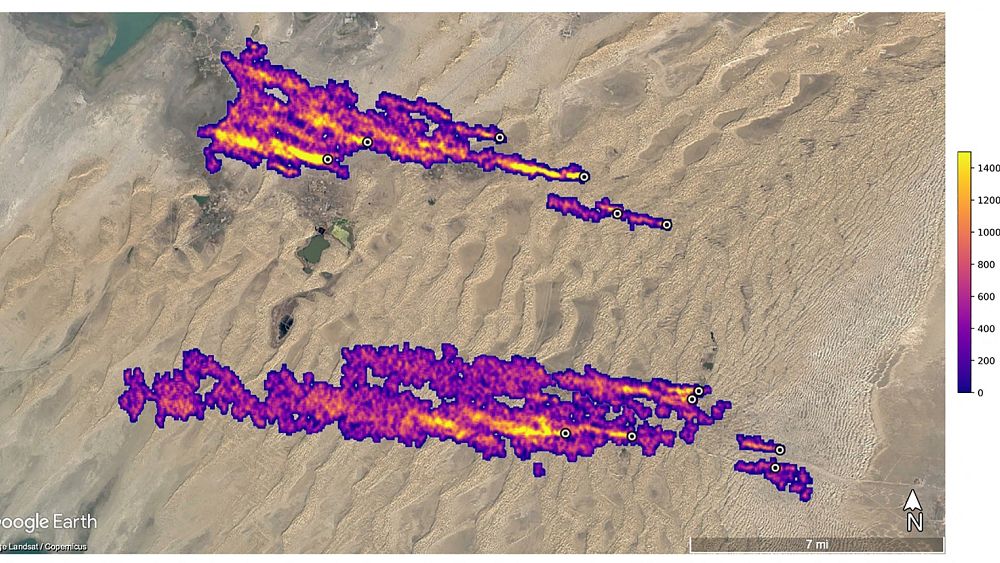A new NASA mission from space has revealed dozens of sites responsible for excessive methane emissions, a result that scientists hope will help reduce emissions of this gas, which contributes significantly to global warming.
These “super emitters” are generally associated with fossil fuel production sites, waste treatment or even agricultural sectors.
The EMIT space mission, launched in July and installed on the International Space Station, was originally intended to monitor how the movement of mineral dust affects the climate.
But this tool also proved useful in another critical mission, as it detected more than 50 high-emission sites in Central Asia, the Middle East and the southwestern United States, the US space agency said Tuesday.
This capability “will not only help scientists better determine the source of the methane leak, but it will also help them understand how to deal with it quickly,” said NASA administrator Bill Nelson.
Some of the detected emission clouds were “the largest of their kind ever seen,” said Andrew Thorpe of NASA’s Jet Propulsion Laboratory. “What we discovered in such a short time was beyond all imaginable.”
In Turkmenistan, the tool identified twelve clouds of emissions from oil and gas infrastructure in the eastern coastal city of Hazar. Some of these clouds, which extend to the west, extend over a distance of 32 km.
In the US state of New Mexico, another nearly 3.3 km long cloud of emissions was detected in one of the largest oil fields in the world.
In Iran, south of Tehran, a cloud of at least 4.8 km in length was observed, coming from a waste treatment complex. Landfills can be a major source of methane, which is produced by the decomposition of waste.
Scientists estimate that these three sites emit 50,400, 18,300 and 8,500 kilograms of methane per hour, respectively.
NASA noted that EMIT is “the first in a new class of spectroscopic imaging devices aimed at Earth observation,” although methods for detecting methane leaks via satellites have developed significantly in recent years.
Methane is responsible for about 30% of global warming. Although it remains in the atmosphere for a much shorter period of time than carbon dioxide, its heating potential is 80 times that of carbon dioxide in twenty years.
Therefore, the reduction of methane emissions is key to achieving the goals of the Paris climate agreement.


